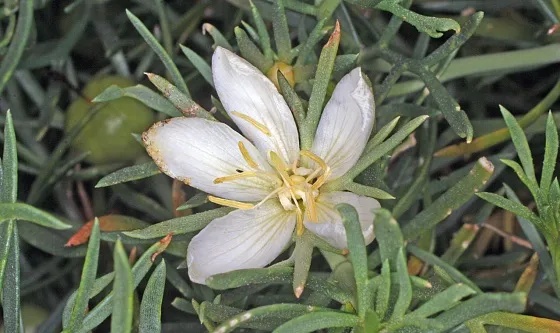Supporters of self -styled natural medicine usually ignore how what they call traditional medicine works.Apple's co -founder Steve Jobs died of pancreatic cancer after trying to fight it with food diets.Possibly I did not know that one of the best drugs against the world's cancer, Paclitaxel, was extracted for the first time from the bark of the Pacific Tejo, a native tree of the northwest of the US. The medicine, discovered in the 1960s,It was the result of a campaign from the US National Cancer Institute to investigate the possible antitumor activity of some 35,000 plants.
In an effort that reminds that titanic task, an international team of scientists, in which three Spaniards participate, has just tried 100,000 drugs to rule out 99,999 and stay with only one, the only promising to fight against diabetes.The compound, the harmony, is extracted from the Harmal, a medium east plant, and of South American vines.
In diabetes, a disease that affects 380 million people in the world, the beta cells of the pancreas stop manufacturing insulin, the hormone that controls blood sugar.So one of the objectives of the scientific community is to multiply the beta cells of the pancreas of the patients.
In the laboratory, Harmina has achieved it, according to a study led by researchers at Monte Sinaí Hospital, in New York, which is published today in the journal Nature Medicine.The molecule, traditionally ingested by Amazonian shamans in spiritual rituals by its hallucinogenic power, tripled the number of beta cells of genetically modified mice to imitate human diabetes."Although we still have a lot of work to improve the specificity and power of the harmina and its related compounds, we believe that these results represent a key step towards a more effective treatment against diabetes," said Andrew Stewart, main author, main author,of the study and director of the Institute of Diabetes, Obesity and Metabolism of Monte Sinaí.
"Harmina is the first compound capable of replicating insulin -producing human cells at levels that can have a therapeutic impact," says the biologist Adolfo García Ocaña, one of the three Spaniards co -authors of work, along with his partner Juan Carlos Álvarez andRoberto Sánchez, director of the Drug Discovery Laboratory based on the structure of Mount Sinai.García Ocaña's group analyzed the effects of harmine on diabetic mice and human cells transplanted to mice.
"I imagine that I am what in Spain is called an urban legend," jokes the biologist in reference to the campaign that has found 430 Spanish scientists abroad after Emilio Lora-Tamayo, the president of the largest science agency in Spain in Spain, the CSIC will describe the brain leakage as "urban legend."
Andrew Stewart, the main author of the discovery./ Icahn MSSM
García Ocaña flees from triumphalisms.Harmina can have effects on other organs and scientists now seek the way to convert the molecule into a precision missile that goes straight to pancreas cells."This will not be easy, since there are currently no means to achieve it, although the first steps are already taking place in this regard in several laboratories in the US," the researcher acknowledges.
To find a needle in a haystack, a metal detector is enough.Finding out which 100,000 molecule is capable of multiplying insulin producing cells requires much more sophisticated methods.The Stewart team believes that the harmona acts on a protein, Dyrk1a, already known for boosting the division of other cell types.This interaction, they maintain, would increase thelevels of other promoters of cell division, such as C-MYC protein.
The researchers designed a microscopic sensor, thanks to a fire of firefly, which shone every time the gene was activated with the instructions to manufacture the C-MYC protein.Of the 100,000 proven compounds, 86 generated a good burst of light, but only the harmony caused the proliferation of pancreas cells.
The discovery, says García Ocaña, offers hope for future regenerative therapies of insulin -producing cells in patients, but also opens the door to the multiplication of donor cells in the laboratory for its transplant to the sick.If scientists are successful, it will be a true example of natural medicine.


